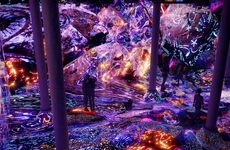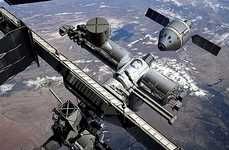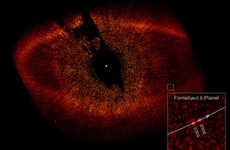
Northern Lights Explained by NASA
References: afp.google
NASA scientists have finally explained the mystery behind the Northern Lights phenomena after a year long study.
Northern Lights (aurora borealis) are natural colored light displays that dance across the sky in spectacular shapes and colors, particularly in the north and south polar zones. Typically, these northern lights occur every two or three days.
According to the findings, the substorms that cause the sudden brightening and rapid movements of the northern lights are the results of energy explosions that happen a third of the way between Earth and the moon. These substorms are triggered by magnetic reconnection, “A common process that occurs throughout the universe when stressed magnetic field lines suddenly snap to a new shape, like an overstretched rubber band.â€
“Magnetic reconnection releases the energy stored within these stretched magnetic field lines, flinging charged particles back toward the Earth's atmosphere,†said David Sibeck, THEMIS project scientist at NASA's Goddard Space Flight Center in Greenbelt, Maryland.
“They create halos of shimmering aurora circling the northern and southern poles.â€
Northern Lights (aurora borealis) are natural colored light displays that dance across the sky in spectacular shapes and colors, particularly in the north and south polar zones. Typically, these northern lights occur every two or three days.
According to the findings, the substorms that cause the sudden brightening and rapid movements of the northern lights are the results of energy explosions that happen a third of the way between Earth and the moon. These substorms are triggered by magnetic reconnection, “A common process that occurs throughout the universe when stressed magnetic field lines suddenly snap to a new shape, like an overstretched rubber band.â€
“Magnetic reconnection releases the energy stored within these stretched magnetic field lines, flinging charged particles back toward the Earth's atmosphere,†said David Sibeck, THEMIS project scientist at NASA's Goddard Space Flight Center in Greenbelt, Maryland.
“They create halos of shimmering aurora circling the northern and southern poles.â€
Trend Themes
1. Northern Lights Science - Opportunity to study the aurora borealis and enhance understanding of space weather and its effects on Earth's climate and technology.
2. Magnetic Reconnection Research - Potential to explore how magnetic reconnection occurs throughout the universe and develop new technologies that harness this energy.
3. Aurora Tourism - Increase in demand for travel to northern/southern polar regions to witness the spectacle of the Northern Lights, creating opportunities for travel companies and local businesses.
Industry Implications
1. Aerospace - Opportunity for aerospace companies to develop new technologies for studying auroras and improving our understanding of Earth's magnetic field and space weather.
2. Energy - Potential to harness magnetic reconnection as a new source of renewable energy, leading to innovative products and services that address climate change.
3. Tourism - Opportunity for the travel and tourism industry to offer unique experiences for customers by showcasing the Northern Lights and promoting eco-friendly travel options.
4.1
Score
Popularity
Activity
Freshness























